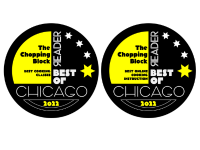I’m always looking for new projects that help me understand food on a deeper level, especially where chemistry meets tradition. I love digging into the why behind certain techniques, and nixtamalization is a perfect example of that intersection.
What Is Nixtamalization?
Nixtamalization is the ancient process of soaking and cooking dried corn in an alkaline solution, typically water mixed with calcium hydroxide (also called slaked lime or cal). After soaking, the corn is rinsed and often dehulled. This method has been used for thousands of years by Indigenous cultures across Mesoamerica and is still widely practiced today throughout Mexico and Central America.
Why Nixtamalize?
This process does a lot more than just soften corn. It:
- Removes the pericarp, the tough outer skin of the kernel
- Makes nutrients more bioavailable, especially niacin (Vitamin B3)
- Improves the flavor and aroma. Nixtamalized corn has a distinct, earthy smell that’s almost floral and deeply satisfying
- Allows the corn to be ground into masa, the base for tortillas, tamales, and atole
- Creates hominy, used in traditional dishes like pozole
And while this is a bit of a labor of love, it produces something far superior to what you’ll find in a can.
What Kind of Corn Can You Use?
You can nixtamalize just about any kind of dried corn, even popcorn, although field corn is most commonly used. Field corn has the starch and structure needed for masa or hominy. Sweet corn, on the other hand, isn’t typically used because it’s harvested when young and doesn’t have the right starch profile once dried.
For this project, I used 4 cups of dried white corn purchased from a local Mexican grocery store here in Chicago. This type is ideal for making hominy or masa.

Sourcing Cal (Calcium Hydroxide)
I also picked up my cal from that same grocery store. You can find it at most Mexican markets. Just ask, and someone will usually point you in the right direction. It can go by several names: cal, lime, slaked lime, whitewash, and occasionally even under brand names like “Nick’s Tamal.” It’s also easily found online.
 This is a basic alkaline powder. It’s less caustic than something like lye (sodium hydroxide), but it’s still smart to wear gloves when handling it directly, especially when mixing it into water.
This is a basic alkaline powder. It’s less caustic than something like lye (sodium hydroxide), but it’s still smart to wear gloves when handling it directly, especially when mixing it into water.
My Process
Here’s how I nixtamalized my batch:
- Rinse and clean: I rinsed the corn under cold water and skimmed off any debris or floaters.
- Make the lime water: I added 12 cups of cold water to the pot, along with 1 tablespoon of calcium hydroxide (about 1 gram per cup of water).
- Boil: I brought the pot to a boil and simmered it for 60 minutes. The corn started to turn a deeper yellow, and that signature nixtamal aroma began to fill the kitchen.
- Overnight soak: I transferred the pot to the fridge, letting the corn steep in the alkaline solution for about 12–14 hours.
- Rinse and scrub: In the morning, I drained and rinsed the corn several times until the water ran crystal clear. I rubbed the kernels between my hands to help remove the pericarp, which flaked off easily at this point.
- Optional trimming: Some people remove the dark, hard tip of each kernel with a paring knife or their thumb nail. I did this to about half the batch to use in my pozole.

How to Use Nixtamalized Corn
At this stage, the corn isn’t quite ready to eat yet. It still needs to be simmered for 2–3 hours in fresh water until the kernels open up and become tender and chewy. This final step is what turns it into hominy.
If you’re making pozole, like I did, you can add the rinsed corn directly to your pot at the beginning of the cooking process, along with your pork or other proteins, and let everything simmer together. This allows the flavors to meld while the corn finishes cooking.
 Alternatively, you can simmer the nixtamalized corn in lightly seasoned water, then use the resulting hominy in a number of ways:
Alternatively, you can simmer the nixtamalized corn in lightly seasoned water, then use the resulting hominy in a number of ways:
- Toss it with roasted chilies and herbs for a warm salad.
- Add it to stews, braises, or chili for extra texture.
- Sauté it with onions and garlic as a side dish.
- Use it in a breakfast hash with chorizo or eggs.
- Blend it into a creamy hominy soup (like a crema de maíz).
If you’ve dehydrated the nixtamalized corn, like I did with half my batch, just store it in an airtight container. It can be rehydrated later, ground into masa, or used to make dishes like atole or tamales from scratch.
Nixtamalization takes time and a bit of effort, but it pays off. It’s a process rooted in tradition, science, and flavor and it connects you to a long lineage of cooks who understood exactly what they were doing. If you’ve got some dried corn and a little patience, I highly recommend giving it a try.
To become familiar with more Mexican ingredients and flavors, don't miss our hands-on Cinco de Mayo class on Monday, May 5 at 6pm at Lincoln Square. You'll learn to make:
- Coctel de Camarones (Spicy Mexican Shrimp Cocktail)
- Spice-Roasted Chicken and Poblano Enchiladas Verdes
- Mexican Rice and Beans
- Kahlua-Flambéed Bananas with Ice Cream and Toasted Coconut












